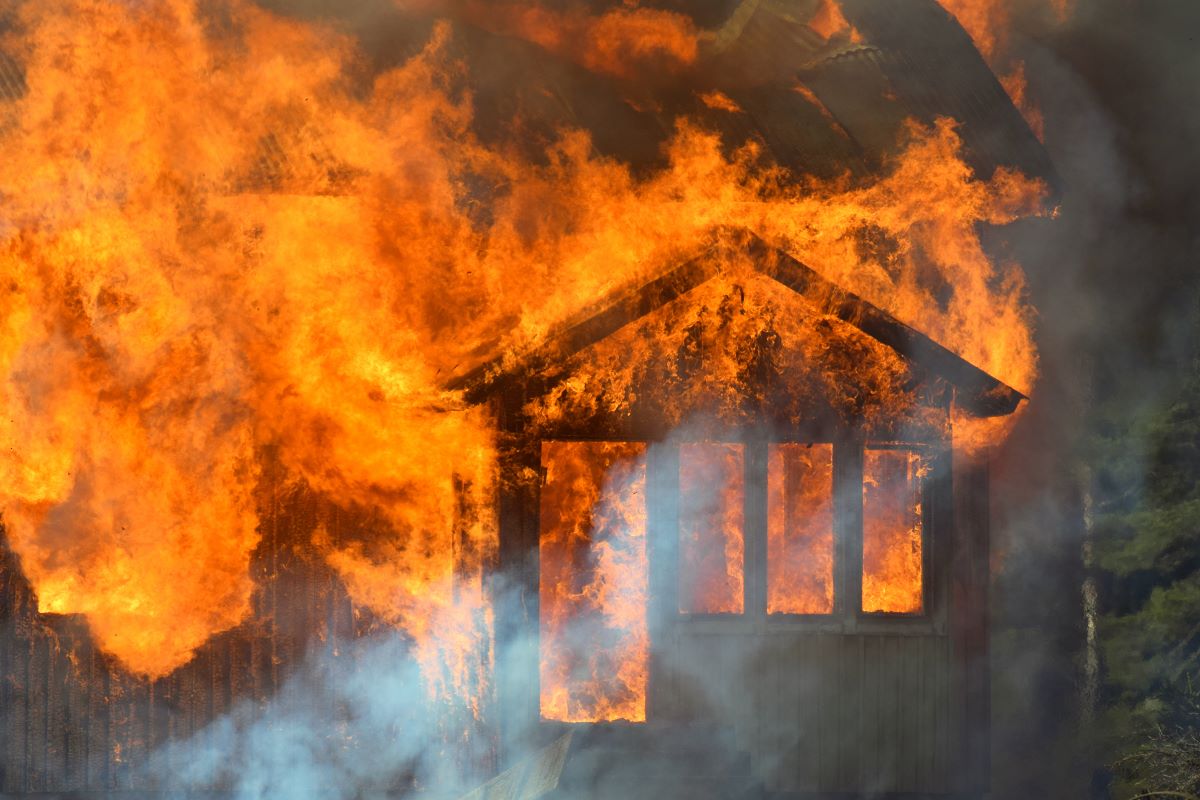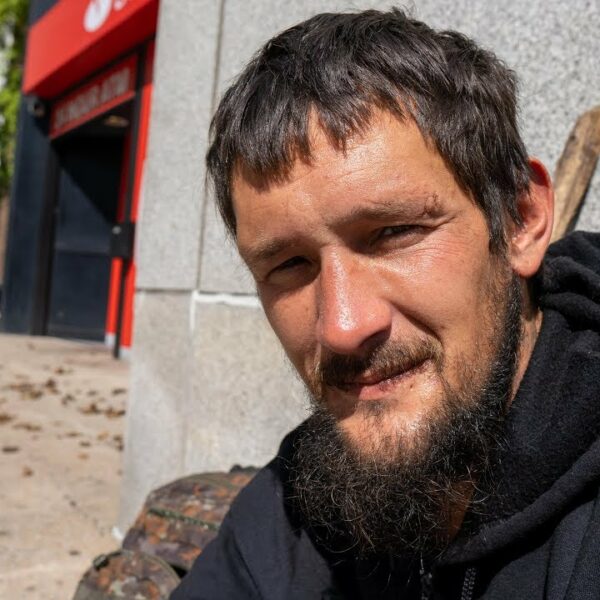“I didn’t realize how flammable these tiny homes are. I mean, these things were just involved. And it was just spreading from like one to the next very rapidly.”
– AMVETS Volunteer Rob Reynolds comments on the latest fire to take down tiny shelters meant to house veterans experiencing homelessness.
There’s been a heated debate about temporary solutions to homelessness. As officials and politicians push to prioritize shelter over housing, that conversation has gone from hot and raging to literally being on fire. Here are the details.
Homeless Veterans Seeking Refuge Are Placed in Flammable Prison-Sized Cells in California. Suddenly and Without Warning, Those Structures are Engulphed in Flames
September 2022 marks the moment West LA’s houseless veteran community joined the elongated list of tiny “house” villages gone up in flames.
According to NBC Los Angeles, the fire likely started around midnight and quickly decimated 15 Pallet Shelter homes. While no injuries or fatalities were reported thus far, the fire did cause approximately $165,000 in structural and property damage. Firefighters flocked to the 11300 block of West Wilshire Boulevard to extinguish the growing sea of flames.
While shocking, dangerous, and expensive, the scene is sadly becoming all too common.
A similar fire involving tiny shelters produced by the same company sparked outrage and concern in March. In that instance, three small structures were wholly and quickly demolished. The event was so horrifying that one Pallet Shelter resident described a hellish scene where the walls were melting around her at every turn as she narrowly escaped with her life, losing all the rest of her worldly possessions in the process.
Eerily similar events date back to 2020 when the tiny company began to grow. During that year, 20 pallet shelters burned to the ground in Banning, California, and four more were scorched to a crisp in Santa Rosa.
At this point, you may think these flammable prison-sized cells have been taken off the market for being personal and environmental hazards. In reality, sales have boomed seven-thousand-fold, and the market just continues to increase.
Now, these incendiary structures are being used to shelter homeless veterans, the very people who pledged their lives to defend the land now burning at their feet.
Meet the Houseless Veterans of West LA
West Los Angeles is “home” to at least 3,500 houseless veterans, many of whom are wrought with disabilities. What this population lacks in housing and healthcare, they certainly make up for in traumatic injury and poverty.
It says a great deal about a country when 1.5 million people who enlist to protect and serve it are considered at risk of homelessness.
These are the same soldiers whose boots were on the ground in Iraq and Afghanistan and whose lives were on the line in Vietnam. One in five of these former soldiers is living alone. Half a million spend more than 50% of their income securing housing.
“The worst part of war should not be coming home,” explained founder and co-author of the VA’s Vet Center Program Shad Meshad in a candid interview about these fires.
Worse still, if this story is any indication, could be coming home to a Pallet shelter. Like an F-16 or naval submarine, this type of “home” is liable to explode into fiery bits at any given moment.
For many former soldiers, life in a tiny house village is just an extension of the battles they’ve already endured, with more moments spent in survival mode equating to fewer moments fully lived. The only difference is that this time served is unpaid.
How did we get here? What can we do to fix it?
The Push Behind the Sudden Surge in Temporary ‘Shelter’
The pandemic ushered in several new possible solutions to both homelessness and abject poverty, some of which were undeniably better than others. In 2020, these prison-sized structures were presented to the public as a temporary fix to the problem of unsheltered homelessness, which was made more visible when the world shut down.
Long before the fires took place, housing advocates were wary of these shed-like fixtures, which bare an eerie resemblance to the coffin homes of Hong Kong and hold an undeniable air of dehumanization. Not only are they notoriously cramped, but they also lack toilets and other basic necessities. Unlike housing, the term shelter lacks a finite definition.
Still, the concept went over well as politicians peddled “shelter” to the public as a kind of bridge between the street corner and the goal of achieving permanent supportive housing. The fact that these villages are infamously flammable is never part of this political campaign. But it should be, and for reasons that affect us all.
Once the Smoke Has Cleared, the Truth of Tiny Shelters Lay in Ash
There are many well-intentioned contributions behind these tiny house villages. Arnold Schwarzenegger, for example, was a heavy donor behind this campaign, funding 25 of the tiny homes himself. There is no shortage of charitable donors and volunteers for projects that would benefit former soldiers suffering under the weight of living unhoused.
However, time continues to show that these constructions are both hazardous and expensive, even as a temporary solution. They are certainly not the best use of veteran-oriented funding. With damages from the fire totaling hundreds of thousands of dollars in losses, not to mention the mass displacement of at least 20 people, it’s clear that these structures are simply not worth all this smoke.
Talk to Your Representatives About Providing Permanent Housing to Homeless Veterans
There is much to lose in this war for housing if we don’t act soon. One of the first things on the line is America’s soldiers. According to the New York Times and other media reports, interest in military enlistment remains at an all-time low, and with good reason.
Who would willingly sign up for a lifetime of hardship knowing they will return from the battle and be tossed into a toilet-less, prison-sized shed that is extremely likely to catch fire?
Talk to your representatives about pivoting away from shelter and toward permanent supportive housing for all.













